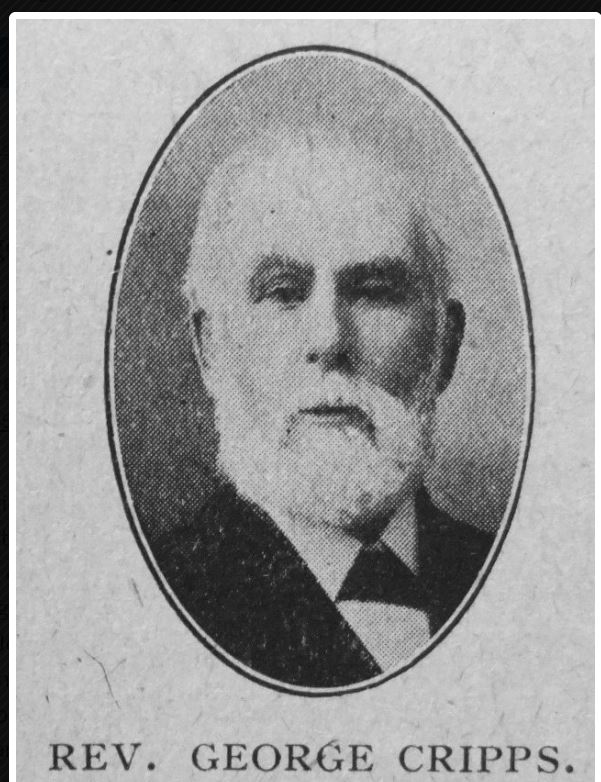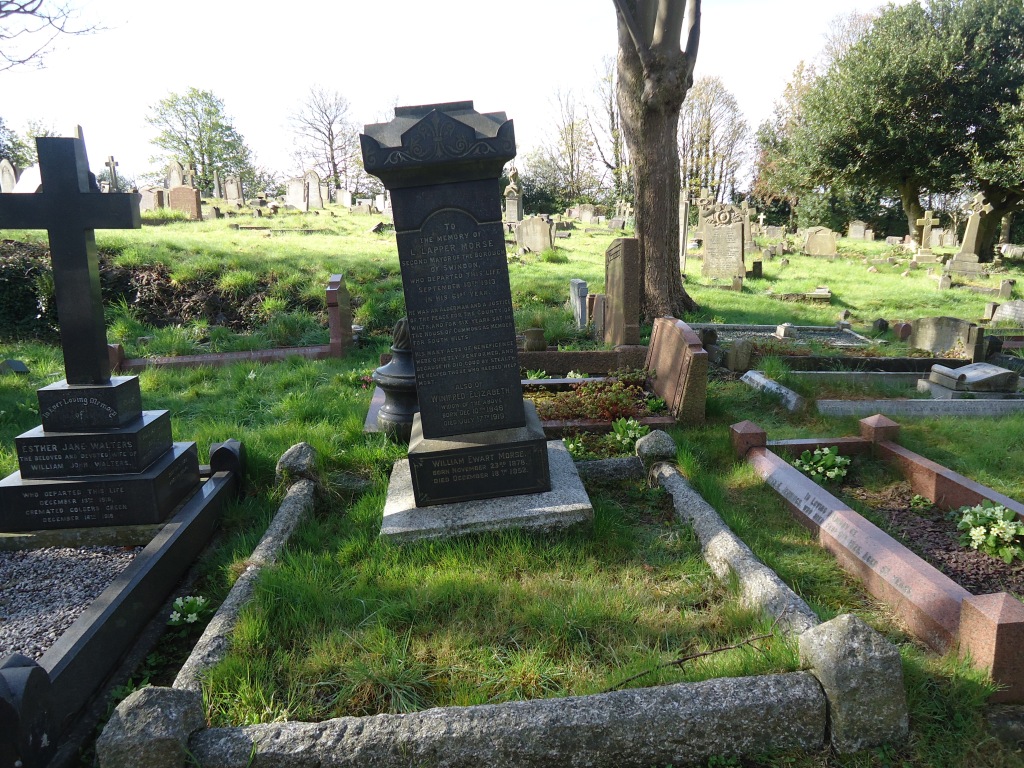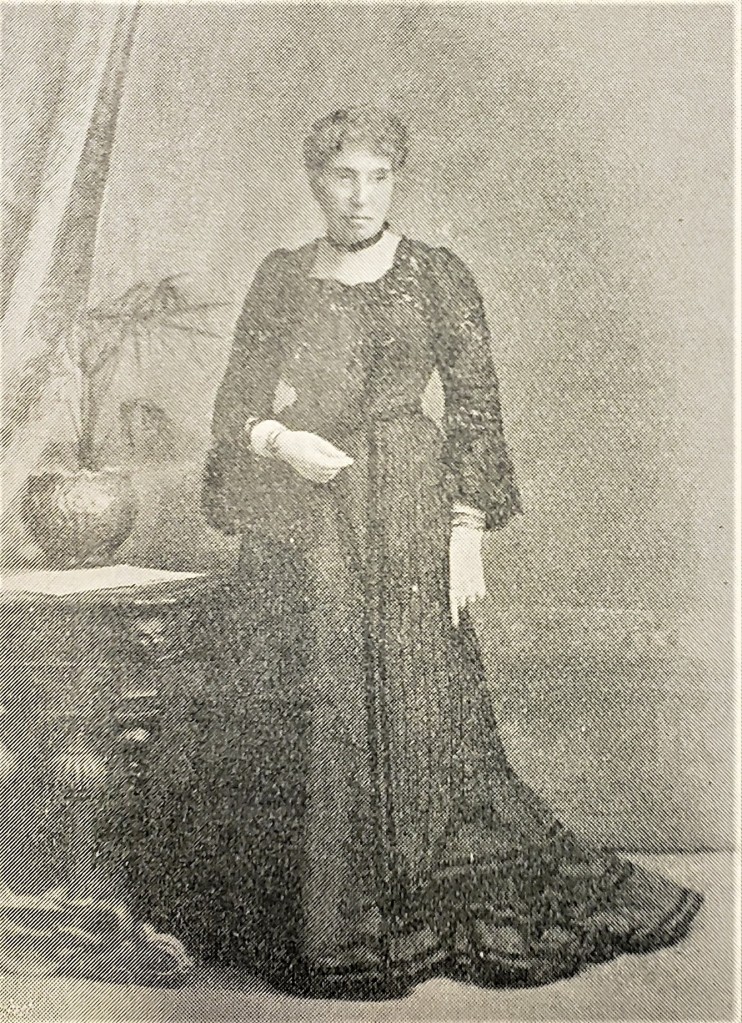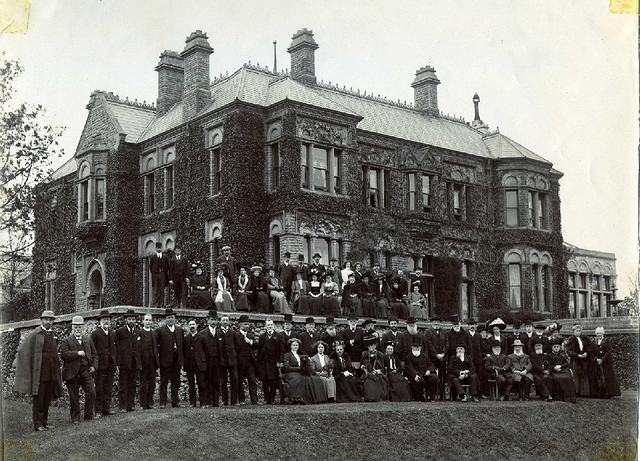Frederick Augustus Powell came from a large family of Primitive Methodists. Born in 1859 to Primitive Methodist Minister Edward Powell and his wife Martha, Frederick grew up first in Penzance and later in Llanguinder, Breconshire. By 1881 he was living with his uncle and aunt George and Mary Smith in Kennington, Lambeth where he describes himself as a Primitive Methodist Minister.
If Frederick served as a Primitive Methodist Minister he did so for a relatively short period. In 1882 he married Emma Ricks, a young draper’s assistant who lived in College Street, Swindon. By 1889 he had had a change of career and was living 25 Avenue Road where he worked as a commercial traveller. The 1891 census records that he and Emma had four children, Ethelwynne born in Devonport in about 1884, Garnet born in Teignmouth in about 1889 and Hilda 2 and Stanley 9 months old, both born in Swindon.
By 1901 they were living at 75 Hythe Road with two more children, Gladys and Morley, and Emma’s widowed mother Jemima Ricks. Frederick states that his occupation was Manager of a Music Shop and Secretary to a Property Company.
In 1911 the family were living at 8 The Mall. Frederick now worked as a Draper and House Furnisher. Emma states that they have been married 28 years and of their 7 children 4 were living and 3 had died.
Frederick Augustus Powell died aged 68 years at the Glenwood Nursing Home, Swindon on Tuesday November 6, 1928. He had survived four of his adult children. Edward Garnet died in 1900; Frederick Charles Stanley in 1901; Emma Ethelwynne in 1913 and Ernest Morley in 1914. The four siblings are buried together in Radnor Street Cemetery in grave plot C56.
Frederick was buried on November 8, in grave plot D262. Emma died in 1934 and was buried with her husband.
Death of Mr F.A. Powell – The death took place on Tuesday morning, at the Glenwood Nursing Home, of Mr. Frederick Augustus Powell, of 8, The Mall, at the age of 68 years. For some time Mr. Powell had not enjoyed the best of health, and on Thursday he underwent an operation. He was a native of Penzance, and came to Swindon when quite a youth. For a considerable time he was the musical instrument manager for Mr. L.L. Morse, of Regent Street. About 28 years ago he commenced business on his own account as a draper and furnisher in Commercial Road. He was a member of the Swindon Chamber of Commerce, and President of the Swindon branch of the Credit Traders’ Association. He leaves a widow and two daughters.
North Wilts Herald, Friday, November 9, 1928
Funeral of Mr F.A. Powell
The funeral of the late Mr F.A. Powell, who for many years carried on business as house furnishers, at 74 and 75 Commercial road, Swindon, took place at the Radnor street cemetery yesterday. Mr Powell, who was 68 years of age, only retired from business a short time ago. He is survived by his widow and two daughters. The service was conducted in the little chapel in the cemetery by the Rev. H. Baird Turner, Wesleyan Superintendent minister, who also officiated at the graveside.
The mourners were Miss Hilda Powell and Miss Gladys Powell (daughters), Mr A.S. Redwood (of Chippenham) Mr W.G. Selwood (who succeeds to the business) Mr H.G. Ford and Miss Woolford (representing the staff at Commercial road), Mrs W.H. Trowbridge, Messrs F. Winslow, L. Winslow, A.W. Hamilton, B. Adams, W.S. Wiltshire and H. Bristow. There were many beautiful wreaths sent, including one from the Swindon Chamber of Committee, [Commerce], of which deceased had been a member for many years.
North Wilts Herald, Friday, November 9, 1928.
Sadly, the two Powell family graves are unmarked.

Frederick and Emma Powell are buried in this area.

The four Powell siblings are buried in this area.




















